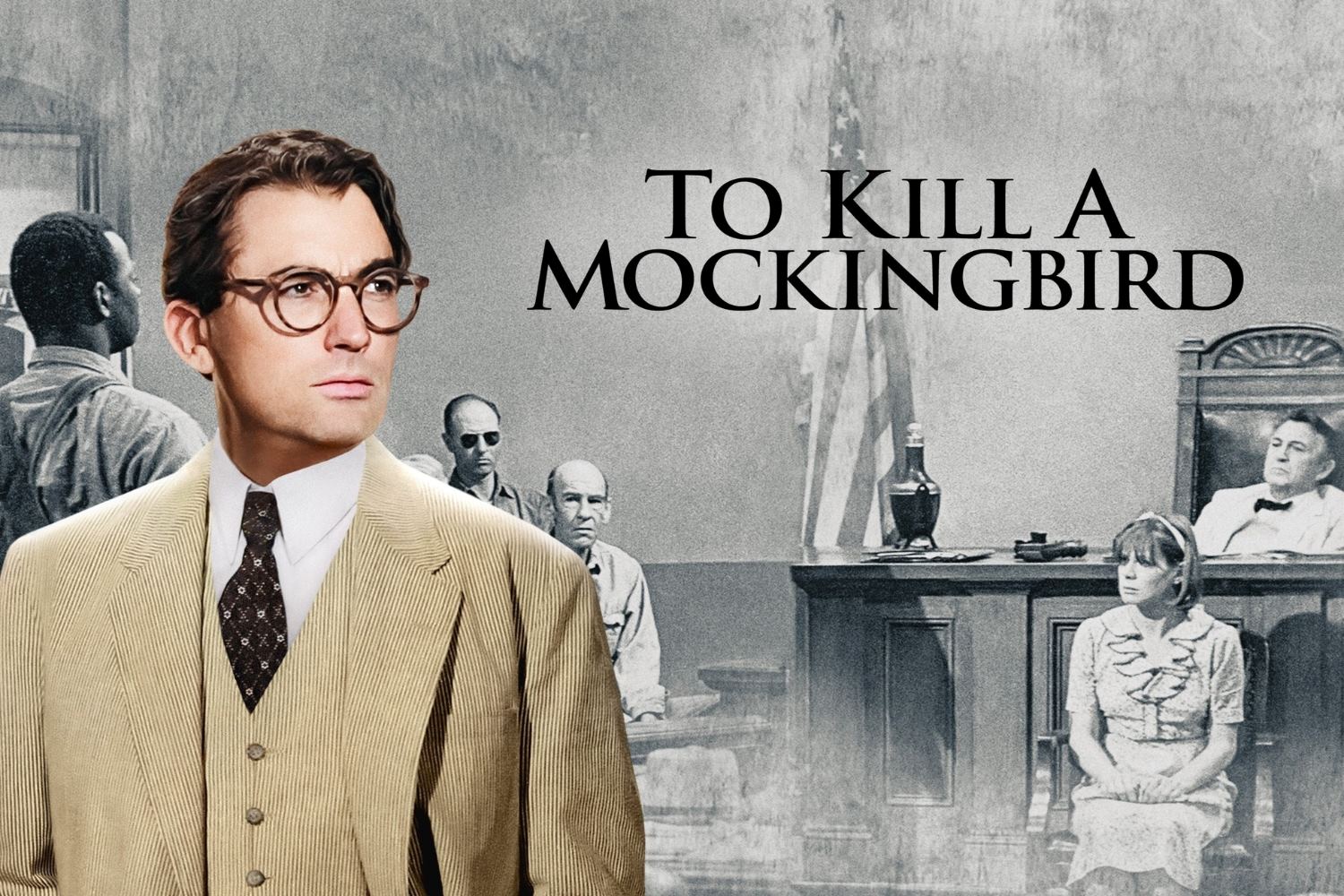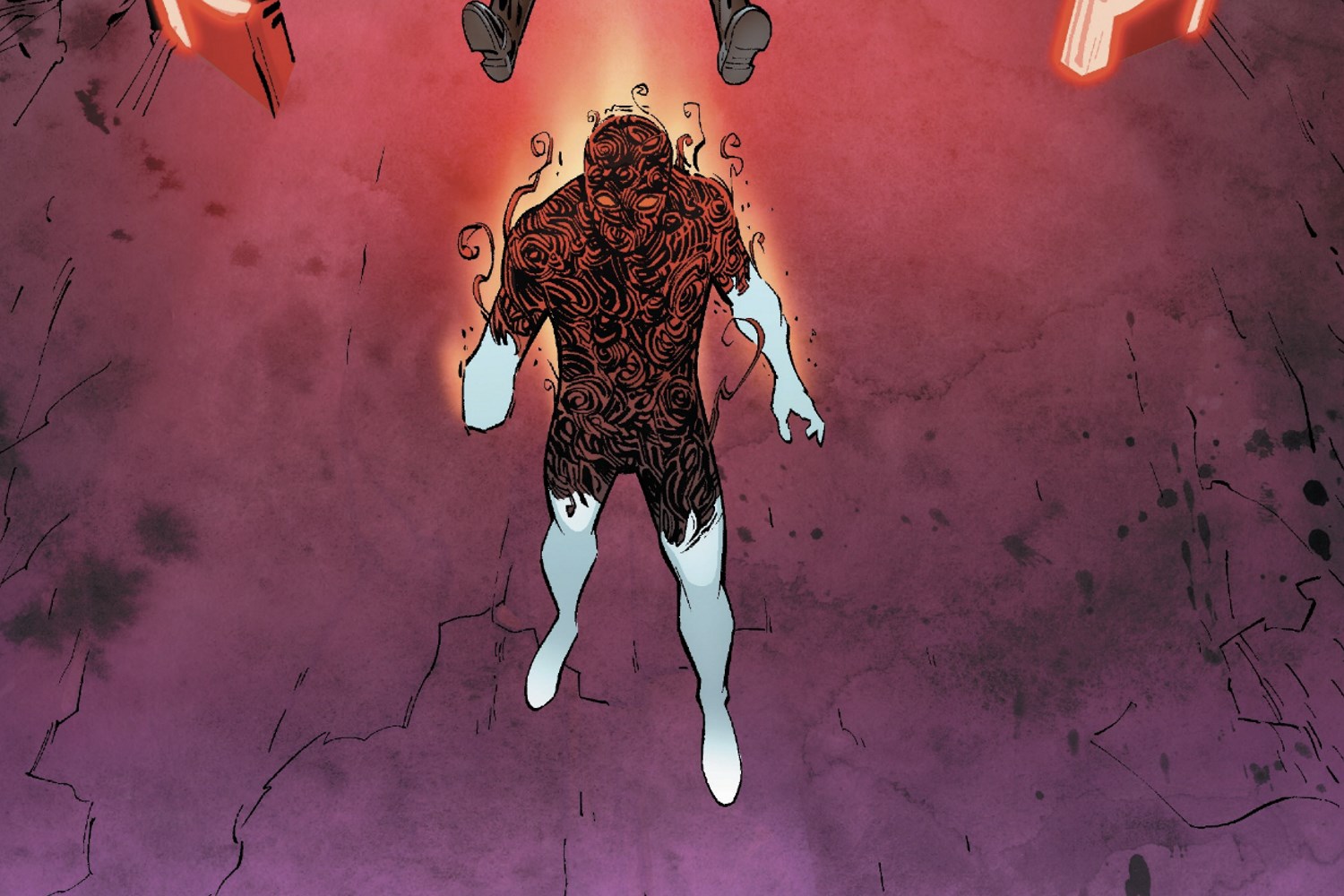Home>Literature>Unveiling The Powerful Coming-of-Age Theme In To Kill A Mockingbird


Literature
Unveiling The Powerful Coming-of-Age Theme In To Kill A Mockingbird
Published: January 15, 2024
Explore the captivating coming-of-age theme in "To Kill a Mockingbird" and its significance in literature. Delve into the powerful narrative that continues to resonate with readers. Discover more about this timeless classic.
(Many of the links in this article redirect to a specific reviewed product. Your purchase of these products through affiliate links helps to generate commission for Noodls.com, at no extra cost. Learn more)
Table of Contents
Introduction
To Kill a Mockingbird, a timeless classic penned by Harper Lee, is a literary masterpiece that delves into the complexities of morality, racism, and societal norms in the American South during the 1930s. At its core, the novel beautifully captures the essence of the coming-of-age theme, portraying the journey of Scout Finch, the young protagonist, as she navigates the intricacies of her small town of Maycomb, Alabama.
Amidst the backdrop of the Great Depression, To Kill a Mockingbird immerses readers in the vividly depicted setting of Maycomb County, a place where deep-seated prejudices and societal injustices loom large. Through the eyes of Scout, the story unfolds, offering a poignant exploration of innocence, morality, and the harsh realities of a racially divided society.
As the narrative unfolds, readers are drawn into the world of Scout and her brother Jem, witnessing their growth and transformation as they grapple with the harsh realities of the world around them. The novel's enduring relevance lies in its ability to resonate with readers of all ages, compelling them to ponder the timeless themes of empathy, compassion, and the loss of innocence.
To fully appreciate the profound impact of the coming-of-age theme in To Kill a Mockingbird, it is essential to delve into the multifaceted layers of the story, from the character development of Scout and Jem to the pivotal trial of Tom Robinson. By examining these elements, one can gain a deeper understanding of the profound emotional and psychological journey that unfolds within the pages of this literary classic.
The Setting of Maycomb County
Maycomb County, the fictional backdrop of To Kill a Mockingbird, serves as a compelling microcosm of the American South during the 1930s. Harper Lee intricately weaves a tapestry of vivid imagery and nuanced details to bring this small town to life, immersing readers in its distinct atmosphere and societal dynamics. Through her masterful storytelling, Lee captures the essence of Maycomb, portraying it as a place where tradition, prejudice, and injustice intersect.
The town exudes a sense of timelessness, with its languid pace and tightly-knit community evoking a nostalgic charm. However, beneath the façade of quaint charm lies a deeply entrenched culture of racial inequality and social stratification. The racial hierarchy is palpable, with the African American community relegated to the margins of society, enduring systemic discrimination and disenfranchisement.
The physical landscape of Maycomb is meticulously depicted, from the weathered storefronts lining the town square to the sprawling expanses of the Finch family's homestead. Lee's evocative descriptions paint a vivid picture of the town's rural beauty, with its rolling hills, meandering creeks, and sprawling oak trees. These natural elements serve as a stark contrast to the moral and social decay festering within the community, underscoring the juxtaposition of beauty and ugliness that defines Maycomb.
Moreover, the town's social fabric is intricately woven with a complex web of relationships, alliances, and longstanding feuds. Gossip and rumors permeate the air, shaping public opinion and fueling the pervasive culture of judgment and prejudice. The rigid social hierarchy dictates the interactions between the townspeople, reinforcing the divisions between the privileged and the marginalized.
In essence, Maycomb County emerges as a character in its own right, playing a pivotal role in shaping the lives and experiences of its inhabitants. Its evocative portrayal serves as a potent backdrop for the unfolding narrative, underscoring the profound impact of the town's collective consciousness on the characters' coming-of-age journey.
Through the lens of Maycomb County, readers are transported to a bygone era, where the echoes of tradition and the harsh realities of racial injustice converge, setting the stage for a poignant exploration of the human condition and the timeless struggle for justice and compassion.
The Character Development of Scout and Jem
The character development of Scout and Jem in "To Kill a Mockingbird" encapsulates a profound and poignant portrayal of the trials and tribulations of childhood, as well as the transformative journey towards maturity and understanding. At the outset of the novel, Scout Finch emerges as a spirited and precocious tomboy, fiercely independent and unyielding in her convictions. Her brother, Jem, exudes a sense of maturity and responsibility beyond his years, serving as a steadfast companion and guiding force for Scout.
As the narrative unfolds, the siblings undergo a remarkable evolution, shaped by the tumultuous events that unfold in Maycomb County. Through their interactions with the enigmatic Boo Radley, the moral fortitude of their father, Atticus Finch, and the harrowing trial of Tom Robinson, Scout and Jem navigate a complex tapestry of experiences that leave an indelible mark on their young lives.
Scout's coming-of-age journey is marked by her gradual disillusionment with the ingrained prejudices and societal injustices that permeate her community. Her initial naiveté gives way to a growing awareness of the world's complexities, as she grapples with the pervasive nature of racism and the inherent flaws of the adult world. Through her interactions with individuals from all walks of life, including the African American community and the reclusive Boo Radley, Scout gains invaluable insights into empathy, compassion, and the enduring power of human connection.
In contrast, Jem's evolution is characterized by a deepening sense of responsibility and empathy, as he confronts the harsh realities of injustice and bigotry. His unwavering support for his father, Atticus, during the trial of Tom Robinson reflects a burgeoning sense of moral integrity and ethical conviction. Jem's gradual disillusionment with the flawed nature of the justice system serves as a catalyst for his emotional and intellectual growth, propelling him towards a more nuanced understanding of the world around him.
The siblings' shared experiences, from their playful expeditions to unravel the mysteries of Boo Radley to their poignant interactions with the marginalized members of their community, serve as crucibles for their emotional and psychological development. Through these formative experiences, Scout and Jem navigate the complexities of morality, empathy, and societal expectations, ultimately emerging as resilient and compassionate individuals.
In essence, the character development of Scout and Jem in "To Kill a Mockingbird" encapsulates the universal journey of adolescence, replete with moments of innocence lost, truths uncovered, and moral compasses recalibrated. Their transformative odyssey serves as a testament to the enduring power of resilience, empathy, and the unwavering pursuit of justice in the face of adversity.
The Trial of Tom Robinson
The trial of Tom Robinson stands as a pivotal and emotionally charged juncture in "To Kill a Mockingbird," encapsulating the raw intensity of racial prejudice, the fragility of justice, and the profound moral fortitude of Atticus Finch. As the trial unfolds, the searing spotlight of scrutiny illuminates the deep-seated racial tensions that permeate the fabric of Maycomb County, laying bare the inherent injustices that plague the town.
At the heart of the trial lies the unjust accusation leveled against Tom Robinson, a black man accused of assaulting Mayella Ewell, a white woman. The trial serves as a crucible of morality and integrity, as Atticus valiantly undertakes the arduous task of defending Tom, despite the vehement opposition and condemnation from the townspeople. His unwavering commitment to upholding the principles of justice and fairness underscores the moral backbone of the narrative, serving as a beacon of righteousness in the face of pervasive prejudice.
The courtroom drama unfolds with palpable tension, as Atticus meticulously dismantles the flimsy facade of the prosecution's case, laying bare the truth for all to see. Through his impassioned defense, Atticus exposes the fallacies and inconsistencies that underscore the Ewells' testimonies, compelling the jury to confront the stark reality of racial bias and systemic injustice. The trial becomes a harrowing testament to the pervasive nature of racial inequality, as the deeply ingrained prejudices of the townspeople cast a long shadow over the proceedings.
The profound impact of the trial reverberates far beyond the confines of the courtroom, permeating the consciousness of the town and leaving an indelible mark on the lives of its inhabitants. The stark juxtaposition of truth and prejudice, justice and bigotry, unfolds with haunting poignancy, underscoring the profound emotional and psychological toll of the trial on the characters and the community at large.
Ultimately, the trial of Tom Robinson serves as a searing indictment of the corrosive nature of racial prejudice, challenging the moral compass of the townspeople and compelling readers to confront the enduring legacy of injustice. It stands as a testament to the enduring power of courage, compassion, and unwavering conviction in the pursuit of truth and righteousness in the face of overwhelming adversity.
The Impact of Racism and Prejudice
The pervasive specter of racism and prejudice casts a long and harrowing shadow over the narrative of "To Kill a Mockingbird," permeating the lives of its characters and shaping the collective consciousness of Maycomb County. Harper Lee's masterful portrayal of the insidious nature of racial inequality serves as a poignant indictment of the corrosive impact of bigotry and discrimination on individuals and communities alike.
The town of Maycomb becomes a crucible of racial tension, with deep-seated prejudices dictating the social dynamics and interactions between its inhabitants. The African American community is marginalized and disenfranchised, enduring the brunt of systemic discrimination and institutionalized racism. Their voices are stifled, their humanity diminished by the pervasive culture of prejudice that pervades the town.
The impact of racism reverberates through the lives of the characters, from the unjust accusation leveled against Tom Robinson to the palpable social ostracization faced by Calpurnia, the Finch family's loyal housekeeper. The stark disparities in treatment and opportunities based on race serve as a sobering reminder of the entrenched inequities that define the town's social fabric.
Moreover, the pervasive nature of prejudice extends beyond the confines of race, permeating the interactions between individuals of varying social strata and backgrounds. The rigid class divisions and entrenched societal norms reinforce the culture of judgment and intolerance, perpetuating a cycle of discrimination and dehumanization.
The impact of racism and prejudice is keenly felt in the moral and emotional development of Scout and Jem, as they navigate the complexities of their small town and confront the harsh realities of injustice. Their interactions with individuals from marginalized communities, including the enigmatic Boo Radley and the stoic African American characters, serve as catalysts for their burgeoning awareness of the profound implications of racial inequality.
Ultimately, the impact of racism and prejudice serves as a sobering reflection of the enduring legacy of societal injustices, compelling readers to confront the profound moral and ethical implications of discrimination. Through its unflinching portrayal of the corrosive effects of bigotry, "To Kill a Mockingbird" stands as a timeless testament to the enduring struggle for empathy, compassion, and the unwavering pursuit of justice in the face of pervasive prejudice.
The Loss of Innocence
The theme of the loss of innocence permeates the narrative of "To Kill a Mockingbird," serving as a poignant and emotionally resonant undercurrent that underscores the profound coming-of-age journey of its young protagonists, Scout and Jem. At the outset of the novel, the siblings embody a palpable sense of youthful exuberance and unyielding idealism, shielded from the harsh realities of the adult world by the comforting veil of childhood innocence.
However, as the narrative unfolds, their idyllic world is shattered by the stark realities of prejudice, injustice, and moral ambiguity that define the social landscape of Maycomb County. The loss of innocence becomes a recurring motif, manifesting in the form of disillusionment, emotional upheaval, and the gradual erosion of their once-unshakable faith in the inherent goodness of humanity.
The siblings' interactions with the enigmatic Boo Radley, the harrowing trial of Tom Robinson, and the pervasive culture of prejudice that permeates their community serve as catalysts for their collective loss of innocence. Through these formative experiences, they are thrust into a world fraught with moral complexities and ethical dilemmas, compelling them to confront the unsettling truths that lie beneath the veneer of societal norms.
Scout's loss of innocence is palpable, as she grapples with the inherent contradictions and injustices that define the adult world. Her unwavering belief in the innate goodness of individuals is tested, and she is forced to reconcile her idealistic perceptions with the sobering realities of racial inequality and social injustice. The gradual erosion of her youthful naiveté gives way to a more nuanced understanding of the complexities of human nature, as she navigates the profound emotional and psychological toll of the events that unfold around her.
Similarly, Jem's loss of innocence is marked by his disillusionment with the flawed nature of the justice system and the pervasive prejudices that dictate the fates of individuals like Tom Robinson. His unwavering belief in the inherent fairness of the world is shattered, and he grapples with the profound implications of societal injustices, ultimately emerging as a more introspective and empathetic individual.
In essence, the loss of innocence serves as a potent narrative device, underscoring the transformative odyssey of Scout and Jem as they navigate the tumultuous terrain of adolescence and confront the enduring legacy of societal injustices. Their collective loss of innocence becomes a poignant testament to the enduring struggle for empathy, compassion, and the unwavering pursuit of justice in the face of overwhelming adversity.
Conclusion
In conclusion, the profound coming-of-age theme in "To Kill a Mockingbird" resonates with timeless relevance, offering a poignant exploration of the human condition and the enduring struggle for justice, empathy, and moral integrity. Through the evocative setting of Maycomb County, readers are transported to a bygone era, where the echoes of tradition and the harsh realities of racial injustice converge, setting the stage for a profound and emotionally charged narrative. The character development of Scout and Jem serves as a testament to the universal journey of adolescence, replete with moments of innocence lost, truths uncovered, and moral compasses recalibrated. Their transformative odyssey encapsulates the raw intensity of racial prejudice, the fragility of justice, and the profound moral fortitude of their father, Atticus Finch.
The trial of Tom Robinson stands as a searing indictment of the corrosive nature of racial prejudice, challenging the moral compass of the townspeople and compelling readers to confront the enduring legacy of injustice. It becomes a harrowing testament to the pervasive nature of racial inequality, as the deeply ingrained prejudices of the townspeople cast a long shadow over the proceedings. Moreover, the impact of racism and prejudice reverberates through the lives of the characters, underscoring the profound emotional and psychological toll of societal injustices.
The loss of innocence becomes a recurring motif, manifesting in the form of disillusionment, emotional upheaval, and the gradual erosion of their once-unshakable faith in the inherent goodness of humanity. The siblings' interactions with the enigmatic Boo Radley, the harrowing trial of Tom Robinson, and the pervasive culture of prejudice that permeates their community serve as catalysts for their collective loss of innocence, compelling them to confront the unsettling truths that lie beneath the veneer of societal norms.
In essence, "To Kill a Mockingbird" stands as a timeless testament to the enduring struggle for empathy, compassion, and the unwavering pursuit of justice in the face of pervasive prejudice. It serves as a poignant reminder of the enduring power of resilience, empathy, and the unwavering pursuit of justice in the face of adversity. Through its unflinching portrayal of the corrosive effects of bigotry, the novel leaves an indelible mark on readers, compelling them to confront the profound moral and ethical implications of discrimination.














